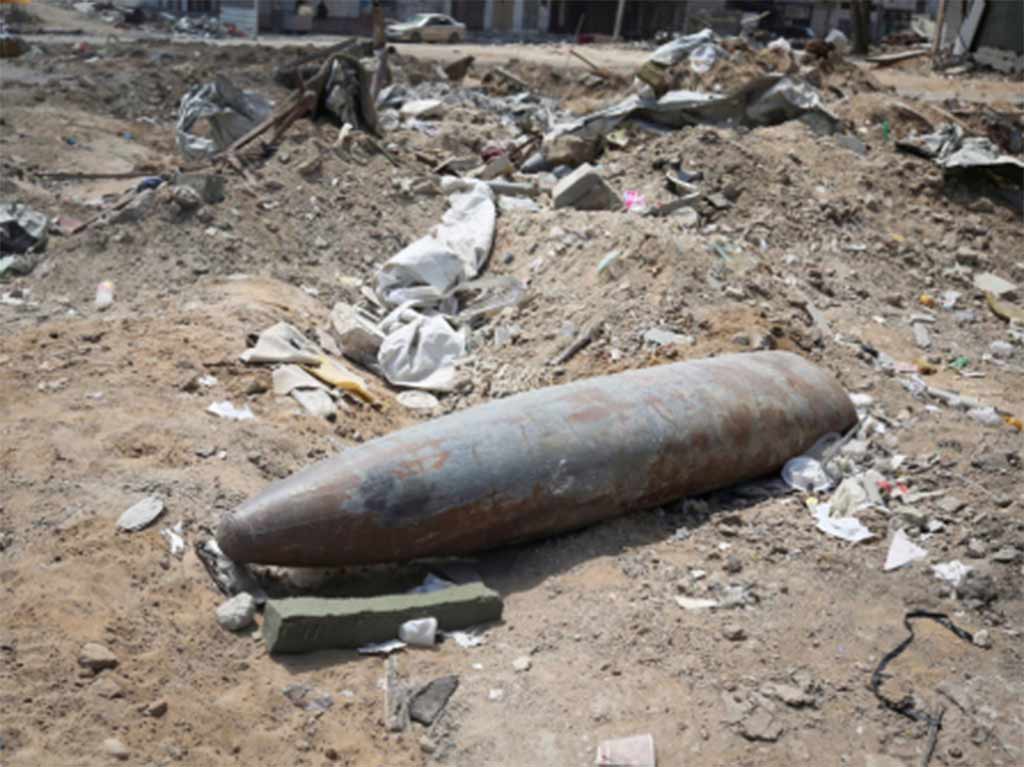The Gaza Strip Civil Defense has warned about the threat posed by the thousands of unexploded ordnances scattered across the territory as a result of two years of Israeli aggression.
In a statement, the agency noted that “the threat of death remains present in every street, house, and corner” of this coastal enclave, home to more than two million people.
It emphasized that this is a real problem for the residents of the Strip, especially the children playing near their destroyed homes.
The Civil Defense renewed its call for the international community to take urgent measures to eliminate this waste. Nick Orr, a munitions clearance expert with the NGO Humanity and Inclusion, announced yesterday that the organization will begin surveys in the Strip this week to locate dangerous munitions.
Orr explained that a team of seven experts will inspect vital infrastructure sites, such as hospitals and bakeries.
Days earlier, the activist warned that clearing Gaza of this technology will take 20 to 30 years and described the territory as a “horrible, unmapped minefield.”
Amid this situation, the Gaza Police General Directorate announced the day before that since the ceasefire went into effect on October 10, there have been several incidents involving explosions of suspicious objects, resulting in injuries.
Therefore, he urged citizens to be vigilant, watch their children, and refrain from approaching or handling any debris or foreign objects found among them.
According to the Gaza Center for Human Rights, some 20,000 munitions, including Israeli bombs, missiles, and shells, remain buried in unexploded land and residential areas.
It noted that 65 to 70 million tons of debris and rubble are scattered across the Strip as a result of the massive destruction that affected tens of thousands of buildings and vital infrastructure.
Of that figure, some 71,000 tons contain explosive materials or unexploded ordnance, it emphasized.
Luke Irving, head of the United Nations Mine Action Service (UNMAS) mission, also recently warned about this situation.
Unexploded ordnance poses a serious threat to the Strip, but removing it will take a long time, Irving lamented, as quoted by Al Jazeera television.
Days earlier, Anne-Claire Yaeesh, director of the NGO Handicap International for the Palestinian territories, highlighted that tens of thousands of tons of explosives had been dropped on the area over the past two years.
Earlier this year, UNMAS estimated that 5 to 10 percent of the bombs dropped by Israel on the Strip failed to detonate.
[ SOURCE: PRENSA LATINA ]

